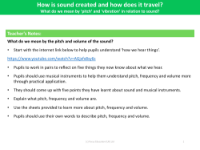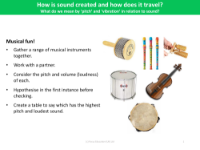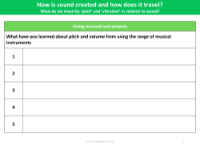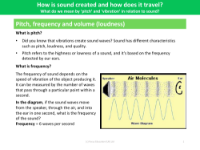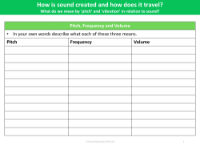What do we mean by 'pitch' and 'vibration' in relation to sound? - Presentation
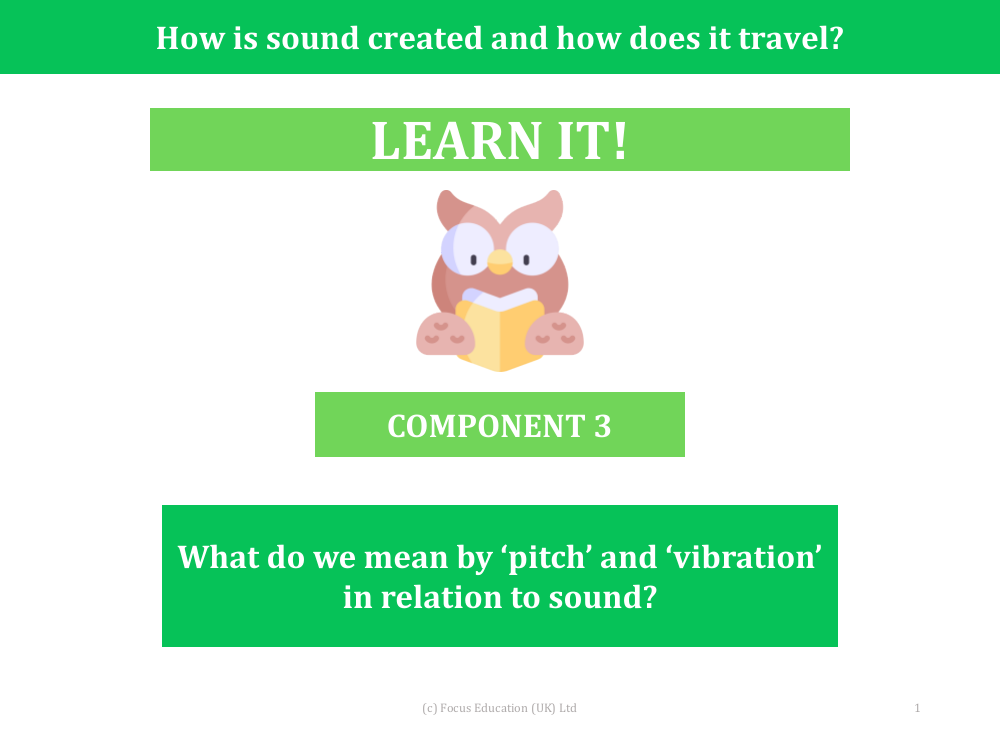
Science Resource Description
Pitch and vibration are fundamental concepts in the study of sound. Pitch is the perception of how high or low a sound is and is determined by the frequency of the sound waves. Frequency refers to the number of sound waves, or cycles, that pass a particular point in one second. Higher frequency sound waves create a higher pitch, while lower frequency waves produce a lower pitch. Vibration, on the other hand, is the rapid back and forth motion of an object, which generates sound waves. These waves travel through a medium, such as air, and are eventually detected by our ears as sound.
Understanding sound involves exploring how it is created and how it travels. Sound originates from the vibrations of an object, which cause the surrounding medium to vibrate as well, transmitting sound waves through the air. These waves reach our ears, allowing us to perceive sound. The volume or loudness of a sound is related to the wave's amplitude; a sound with greater energy will have a higher amplitude and will sound louder. In a classroom setting, students can learn about these concepts through interactive activities such as watching educational videos, working with musical instruments to explore pitch and volume, and discussing their observations. By engaging with these practical applications, students can deepen their comprehension of how we hear and understand the intricate properties of sound.
